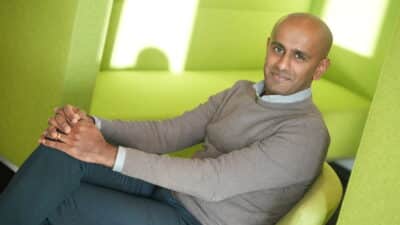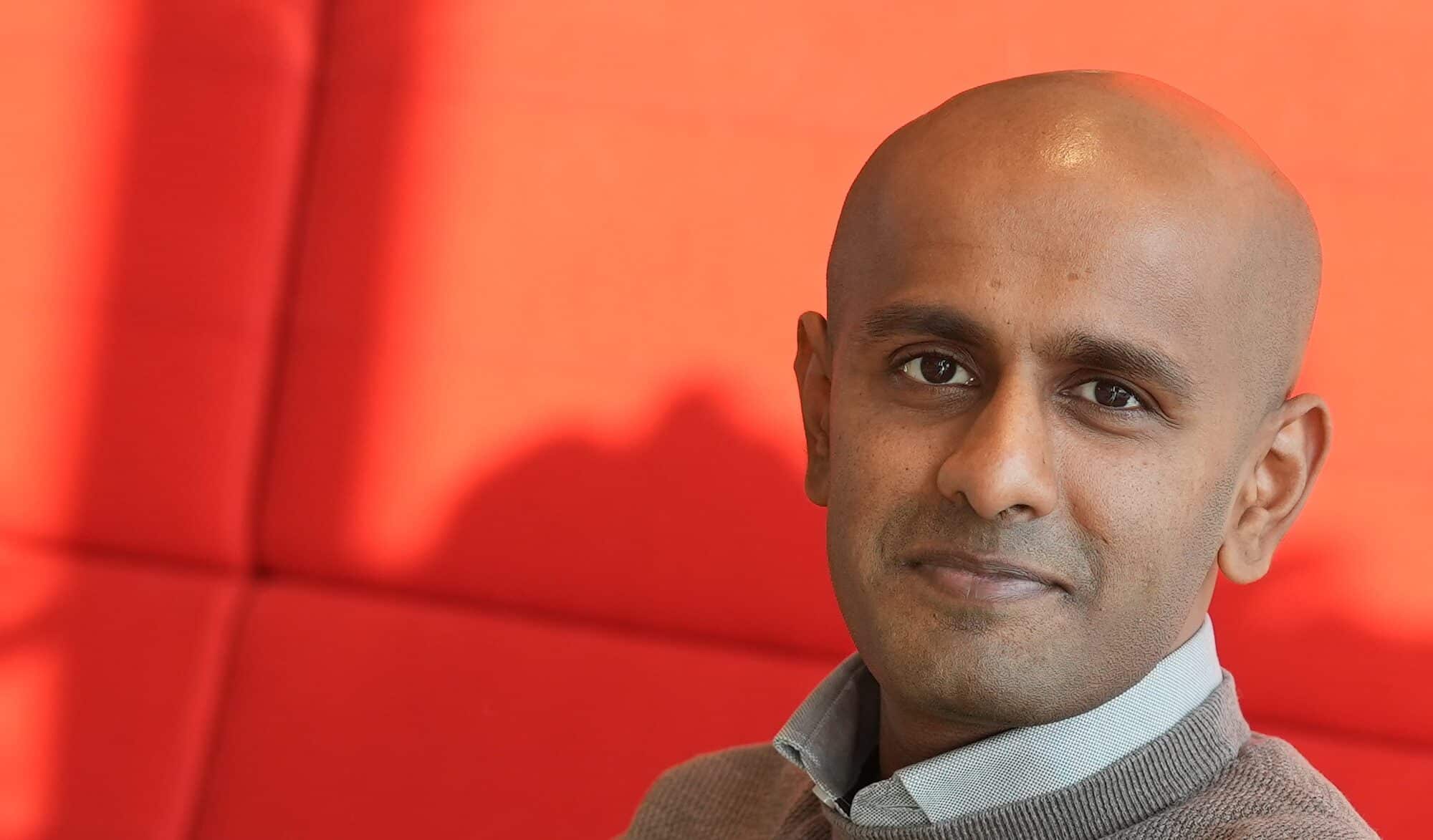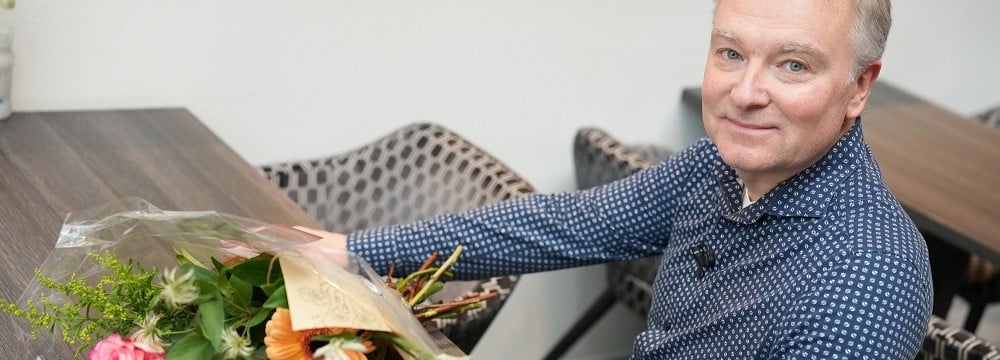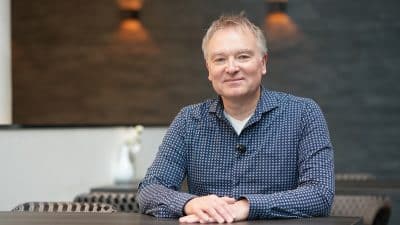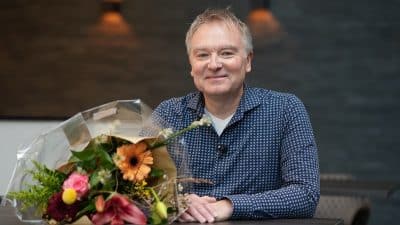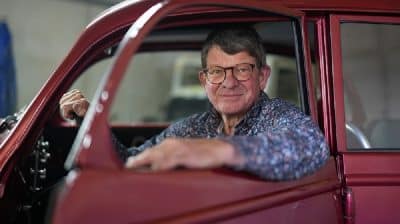Erik Manders and Marc Vermeulen are taking a leading role in the “Design Principles for Precision Engineering” (DPPE) training. The duo is taking over from Huub Janssen, who was the lead for seven years. Part one of a two-part series: trends in construction principles.
Precision technology is not a fixed concept; this toolkit for high-tech engineers evolves over time. To gain insight into this, High Tech Systems magazine invited Huub Janssen, Erik Manders, Adrian Rankers, and Marc Vermeulen for a discussion about the precision world, the changing trends and requirements in high-tech, and what it’s like to work in this field. In the second part, we will delve into the impact this has on the Design Principles for Precision Engineering (DPPE) training.
Like Janssen, Manders and Vermeulen have been active in high-tech for decades, although their roles and interests differ. Janssen is the owner of a high-tech engineering firm and was the figurehead of the DPPE training for seven years. The new duo setting the broad direction now works at ASML, Manders as Principal Systems Architect for Mechatronics, and Vermeulen as Principal Mechanical System Architect. Adrian Rankers, who previously worked as Head of Mechatronics Research at Philips CFT, is now a partner at Mechatronics Academy (MA) and is responsible for the DPPE training that MA offers through the High Tech Institute.
“Thirty years ago, positioning to the micrometer was a field from another planet,” said Janssen in 2019 when he became the face of the DPPE. When he graduated in the mid-eighties, designers were still working with micrometers. “Over the years, this has shifted to nanometers,” he observes today.
Since the early nineties, with his company JPE, he has been developing mechatronic modules for high-tech, scientific instruments for research, and more recently, systems for quantum computers. “If you talk to those physicists now, they talk about picometers without blinking an eye. To me, that almost feels philosophical.”

Erik Manders and Marc Vermeulen have been involved as trainers in the Design Principles for Precision Engineering training for years. The training was originally developed at the Philips Center for Manufacturing Technology (CFT), where both started their careers. Vermeulen has been part of a group of DPPE trainers at Mechatronics Academy for several years. Manders taught the course for many years with Herman Soemers at Philips Engineering Services, until the mechatronics group of this activity was transferred to ASML in 2023.
Not straightforward
The concept of precision technology is difficult to define. It’s a toolbox that offers designers significant room for creativity. Give ten designers the same problem, and you’ll receive different solutions that vary in both direction and detail. The design approach differs greatly depending on the application but is also subject to trends and changing requirements. In a few years, the requirements and approaches may barely change, but look ahead ten years, and the designs and methods that are used to bring them to fruition can be entirely different.
Interferometer Suspension
There is no holy grail or universal design rules in precision technology. Best practices differ depending on the market, system, or application. Huub Janssen discovered this when he first joined ASML freshly out of school. “At first, I learned to build something statically determined from Wim van der Hoek,” he says. “But at ASML, I found that this approach didn’t always work. For the PAS2500 wafer stepper, we initially developed a new interferometer suspension to measure the position of the stage in the x and y directions. This design followed Van der Hoek’s principles, with elastic elements and so forth. But when we tested it, we found that there was no damping. It is reproducible, but everything kept vibrating. It was a disaster. I learned that you can’t just apply certain Van der Hoek construction principles everywhere; you have to know when to use them.”
Increasing Demands
The ever-increasing demands for precision strongly influence design choices. Vermeulen explains, “With increased accuracy, complexity increases. Each time you have to peel away the problem a little further. You continuously encounter new physical phenomena that didn’t matter before but now have an impact. You then need to get to the core: what’s happening physically here?”
Vermeulen gives the example of the application of passive damping on the short-stroke wafer stage of lithographic scanners. ‘That was quite a hurdle that we had to take around 2015, because what you design has to be predictable. If you think in terms of stiffness and mass, that is still possible. But in the beginning we did not know how a damper would behave.
Would it age? Creep? We had to understand that completely. That meant modeling how damping affects the dynamics. We couldn’t match that at first, but when we finally got it right we could match the measurements and the model. Only after we were reasonably sure that we understood it, could we take the next step. If you don’t do this properly, it remains guesswork, you can’t predict the behavior well and you will be surprised later.’
Another example is problems that can arise when increasing productivity. Especially with water-cooled components, it is a challenge to keep this under control. Everyone knows the bursting of the water pipe when you quickly close a tap. In the same way, acceleration creates pressure waves in systems with water cooling. ‘You have to dampen those waves, because pressure pulses cause deformation’, says Vermeulen, ‘you have to understand how that works.’
Manders adds, “On a micrometer scale, you wouldn’t notice this, but on a nanometer scale, even a glass block deforms if the pressure changes. This is a physical issue at the system level.”
Simplicity
The main approach is to strive for simplicity. This leads to robust and cost-effective constructions. But there’s another important reason to keep things simple. Once a chosen solution is embedded in a product, designers who build on it won’t quickly change that subsystem. “If you opt for complexity, you’ll never be able to remove it,” summarizes Rankers. “If you don’t enforce simplicity from the start, you’ll keep struggling with it. It’ll keep nagging at you.”
Janssen: “If it works, no one dares to touch it. If you build in reserves, no one will later suggest removing them. Because everyone will counter: ‘Are you sure it will still work then? You can guess what the outcome will be.'”
Vermeulen: “Exactly. No one dares to go back. You start with a design, set up a test rig, and once it has more or less proven itself, you go with it.”
Manders: “You must avoid complex adjustments or calibrations because they will never go away. The project team that comes afterward will say, ‘We’ll just copy this because it works. We’ll do it the same way.'”
These are tough decisions, says Janssen. Design choices can vary greatly and depend on the application and market. “For semiconductor equipment, you want to recalculate everything a hundred times before you build the machine. Designers may build in some reserve to make the construction work. But small margins in various budgets sometimes make a solution impossible or overly complicated. Sometimes you really have to pull out all the stops to achieve that last bit of precision. But once it’s done, you can’t go back.”
At his company JPE, Janssen encourages his designers to sometimes take more risks. “It can often be cheaper. Something thinner and a little less stiff can be finished faster and more cheaply. But you really have to dare to do it.”
Manders: “But sometimes reserve costs almost nothing. By designing smartly, accuracy can often be achieved without going through many extra manufacturing steps. For example, by smartly looking at whether you can mill multiple surfaces in one setup and take advantage of today’s highly accurate milling machines. In any case, it’s important to develop a feel for it.”
System architect
Manders started at Philips CFT as a designer. In recent years, he had a more coaching role as a systems architect in the mechatronics department of Philips Engineering Services, which transitioned to ASML in 2023, working with a team of about a hundred colleagues and technicians at suppliers. “Yes, then you’re in a lot of reviews.”
He sees his role as “maintaining the overview between the disciplines.” “I try to be the cement between the bricks. In the end, it has to function. That’s the game.”
Twenty Balls
Janssen chose to start his own company early in his career, Janssen Precision Engineering, later JPE. Manders and Vermeulen, on the other hand, work in a larger organization where they must coordinate with many colleagues and suppliers. “I have to keep twenty balls in the air with challenging technique,” describes Janssen, who also sees his job as a hobby. “Meanwhile, I have to look at what the market needs. We’re not a large company, but we have a significant impact worldwide.”
What’s it like in a much larger organization like ASML? Vermeulen says, “Someone who just joined will be working on a very small part. The challenge is to help them understand how their contribution fits into the bigger picture.”
Manders adds, “Thousands of people work on our machines. You can’t immediately grasp it as a newcomer. The complexity is overwhelming.”
The founders at ASML, according to Manders, had the advantage of starting with simpler devices. “They could understand those better, and that was their anchor point when the machines became more complex. People who join later can’t immediately see the whole picture. People who only start working can’t see the forest from the trees at first. They have to grow into it and discover the context over time.”
Conductor
In such a large team, everyone has their role. “What the servologists and flow dynamics experts in my team calculate, I couldn’t do myself,” says Manders, who sees himself more as a conductor. “I try to give less experienced colleagues direction and a feel for the context. Why are we doing this? Where are we heading? You try to make the team play together and create something beautiful. But a good orchestra essentially plays on its own.”
Rankers adds, “On your own, you can’t accomplish these complex modules. It’s like a football team. The coach doesn’t score goals either.”
Vermeulen recognizes this. “I’m responsible for the technology, but also for how we work together. This is probably half of my time: providing leadership. You have influence over how the team collaborates. As a systems architect, you bring everything together and provide direction. You ask your experts what the best solution is from their perspective, and that leads to a balanced design. There can be a hundred or a hundred and fifty people in a team, but how they work together is key.”
Big projects
Manders regrets not constructing things himself anymore, but he finds his current role just as challenging. “Now, I’m more focused on keeping everything balanced and making system choices in large projects.”
Vermeulen relates to this role as a coach. “It’s about zooming out and zooming in. Keeping an eye on the big picture.”
Manders explains, “Lots of one-on-one discussions, crouching next to colleagues, brainstorming where we need to go. Sometimes you have to zoom out and realize you’re on the wrong track. The approach needs to change entirely.”
Manders refers to this as “the charm of designing”. “All the considerations you make with your team lead to something beautiful if it’s done right. It’s exciting to see it grow from the side as an architect. Sometimes, people come up with very surprising ideas at the coffee machine. The process of creating a design is magical. You just can’t design the more complex modules alone.”
Vermeulen adds, “One plus one equals three. One person says something, which sparks an idea in another person. A third then comes up with something surprising, and so on.”
Janssen concludes, “But eventually, someone needs to choose a direction.”
This article is written by René Raaijmakers, tech editor of Bits&Chips.


